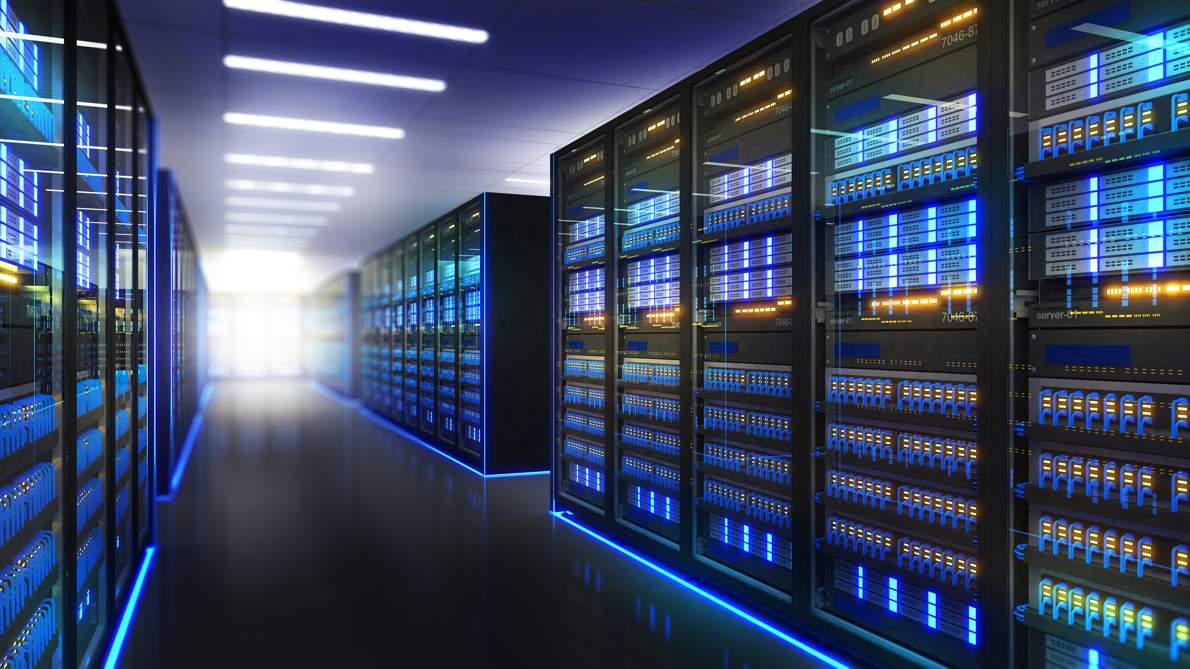 Trusted Moving Services for Businesses with Technology and IT Infrastructure
Trusted Moving Services for Businesses with Technology and IT Infrastructure
In today's digital age, businesses heavily rely on technology and IT infrastructure to carry out their daily operations such as data management, communication, and customer service. As technology continues to evolve and advance, companies need to adapt and upgrade their IT systems to stay competitive in the market. This includes the need for businesses to regularly update their hardware and software, as well as properly manage the relocation of technology equipment during office moves or infrastructure upgrades.
Moving technology and IT infrastructure can be a complex and intricate process, requiring specialised knowledge and expertise. To ensure a seamless transition during the upgrade and relocation of technology and IT infrastructure, here is a comprehensive guide on how to effectively manage the process with the help of a specialty moving company like Chess Moving. By working with experts in specialty moving for technology and IT infrastructure, businesses can ensure that the whole relocation process is executed smoothly and efficiently.
Upgrading Your Office Technology and IT Infrastructure: The Need for an Effective Transition when moving office
Relocating your office presents an opportunity to not only upgrade your physical space but also to upgrade your technology and IT infrastructure. This transition is not without its challenges but with careful planning and the right strategies, you can ensure a seamless and successful transition. Here are some key considerations for effective transition planning:
-
Before moving, Identify and assess your business processes and IT infrastructure
Before embarking on an office relocation and technology upgrade, it is essential for you to first identify and assess your current business processes and IT infrastructure. This includes understanding the criticality and time sensitivity of various business processes, as well as identifying any existing threats or vulnerabilities to the IT infrastructure. By conducting a thorough assessment, you can identify areas for improvement and prioritise your technology upgrade efforts accordingly.
-
Prioritise critical areas and allocate resources wisely to prepare for your move
Once you have identified your critical business processes and areas for improvement, it is important to prioritise these areas and allocate resources accordingly. This ensures that the most important aspects of the IT infrastructure are given top priority during the technology relocation or upgrade process. By allocating resources wisely, businesses can ensure that they have the necessary budget, personnel, and equipment to successfully execute the transition for relocation.
-
When moving office seek the expertise of IT specialists and technology consultants
IT specialists can provide valuable expertise and guidance during the process of upgrading your technology and IT infrastructure. By involving IT specialists early on in the planning process, businesses can benefit from their insights and recommendations regarding the selection of new hardware and software, potential integration challenges, and best practices for implementing the new technology. Their knowledge and experience can help you make informed decisions, avoid costly mistakes, and ensure a smooth transition from the old to the new IT systems.
-
Ensure compatibility and integration for a future-proof solution
As businesses transition to new technology and IT infrastructure, it is crucial to ensure compatibility and integration with existing systems. This includes verifying if the new technology is compatible with the current IT environment and if it aligns with the company's policies, development practices, and business needs. Furthermore, it is important to consider the scalability and future-proofing capabilities of the new technology. This means assessing whether the technology can be easily upgraded or expanded to meet future business requirements after your move.
-
Provide ongoing support and education
During the transition to new technology and IT infrastructure, it is essential to provide adequate training and support for employees. This will help them adapt to the changes and effectively use the new systems. Additionally, ongoing education and support should be provided to ensure that employees stay up-to-date with the latest technology advancements and are able to maximise the benefits of the upgraded IT infrastructure after your relocation.
Cybersecurity Measures: Mitigating the Risk of Cyber Threats when moving
 Managing Cyber Threats When Moving In Australia
Managing Cyber Threats When Moving In Australia
Alongside the physical considerations of a data centre relocation, it is essential to address the potential risks and vulnerabilities posed by cyber threats. Strong cybersecurity measures should be implemented to mitigate the risk of data breaches and ensure the protection of sensitive information during the technology and IT infrastructure transition. This can be achieved through the following measures:
-
Implement robust access controls:
Access to the new data centre should be strictly controlled, with only authorised personnel granted entry. This can be achieved through measures such as implementing multi-factor authentication, role-based access controls, and encryption of sensitive data. Additionally, regular audits and monitoring of access logs can help identify any unauthorised access attempts.
-
Encrypt data in transit and at rest:
During the moving process, data may be vulnerable to interception or unauthorised access. To ensure the security of customer data, all data should be encrypted both in transit and at rest. This can be done by using secure protocols such as HTTPS or VPNs for data transmission, and by employing robust encryption algorithms for data storage.
-
Implement comprehensive network security measures:
The new data centre should be equipped with firewalls, intrusion detection and prevention systems, and other network security solutions to protect against potential cyber threats. These security measures are crucial in preventing unauthorised access and protecting the integrity and confidentiality of data during the technology relocation process.
-
Ensure regular software updates and patches:
It is important to keep all software and systems up-to-date with the latest security patches and updates. This helps to address any vulnerabilities that may be exploited by cyber threats. Regularly updating software and systems ensures that any known security vulnerabilities are patched, reducing the risk of cyber attacks during the transition.
-
Implement strong endpoint security:
Endpoint devices such as laptops, desktops, and mobile devices should be equipped with robust security measures to prevent unauthorised access and protect against potential threats. This can include implementing endpoint protection software, enforcing strong password policies, and enabling features such as remote wiping and device encryption.
-
Conduct comprehensive security audits:
Before, during, and after the move, it is important to conduct thorough security audits to identify any potential vulnerabilities or risks. These audits should include vulnerability scans, penetration testing, and risk assessments to ensure that all aspects of the technology and IT infrastructure are secure.
-
Train employees on cybersecurity best practices:
One of the most common causes of security breaches is human error. Therefore, it is essential to provide comprehensive training to employees on cybersecurity best practices. This includes educating them on the importance of strong passwords, recognizing phishing attempts, and understanding the role they play in maintaining the security of customer data. Furthermore, organisations should establish a clear incident response plan and continuously monitor the network for any unusual activity.
Data Centre Relocation: Migration Strategy and Best Practices
 Data Centre Moving And Relocation Services Australia
Data Centre Moving And Relocation Services Australia
Relocating a data centre is a complex process that requires careful planning and execution to minimise downtime, ensure data security, and maintain business continuity. To ensure a seamless transition during a data centre relocation, you should consider the following migration strategy and best practices:
-
Develop a detailed project plan:
A comprehensive project plan should outline the timeline, tasks, and resources needed for the data centre relocation. This plan should include a thorough assessment of the current data centre infrastructure, identification of critical systems and components, and a detailed roadmap for moving and setting up the new data centre. The project plan should also incorporate contingency plans in case of unforeseen challenges or issues that may arise during the technology relocation process.
-
Conduct a thorough risk assessment:
Before the data centre relocation, your team should conduct a comprehensive risk assessment to identify potential risks and vulnerabilities. This will help in developing mitigation strategies and implementing necessary measures to address these risks, such as data backups, security protocols, and disaster recovery plans. Additionally, you should assess specific risks related to the physical move, such as equipment damage, transportation issues, and power outages.
-
Ensure data backups and redundancy:
Before beginning the data centre relocation, it is crucial to back up all data and ensure redundancy in systems. This includes making multiple copies of critical data and storing them in different locations to mitigate the risk of data loss during the process. Additionally, companies should have a recovery strategy in place to ensure that in the event of any unforeseen issues or data loss during the technology relocation process, they can quickly and efficiently restore systems and data.
-
Consider the physical and technical requirements of the new data centre:
When planning for a data centre relocation, you should carefully consider the physical and technical requirements of the new facility. This includes evaluating factors such as power and cooling capabilities, network connectivity, physical security measures, and scalability options. By considering these requirements, you can ensure that the new data centre can adequately support your technology and IT infrastructure needs, both in the present and for future expansion.
-
Engage a specialty moving service:
To ensure a seamless transition of technology and IT infrastructure during the data centre relocation, it is advisable to engage a specialty moving service, such as Chess Moving, that specialises in handling sensitive and complex equipment. These professionals have the expertise and resources to carefully dismantle, pack, transport, and reinstall the IT infrastructure without damage or disruption. By outsourcing the moving process to a specialty service, businesses can minimise the risks associated with handling valuable and fragile IT equipment.
People and the Business: Preparing For a Successful Move
 Successfully Moving People And Businesses In Australia
Successfully Moving People And Businesses In Australia
Preparing for a successful move in the IT industry involves several factors, including the readiness and adaptability of employees, appropriate business processes, and the smooth transfer of technology and infrastructure. All employees should be well-prepared and knowledgeable about the upcoming change in order to ensure a seamless transition. Start by fostering a sense of organisational readiness within the workforce. Make sure instructions are clear, timetables are established, and checklists are provided to guide employees through the moving process. Create teams and delegate responsibilities to ensure that all necessary tasks are covered and completed on time. By doing so, you can promote a positive and proactive mindset among employees, paving the way for a successful transition.
Securing Your IT Assets During an Office Move
When planning an office move, it is crucial to prioritise the security of your IT assets. The sensitive nature of technology equipment, such as servers, data storage devices, and networking hardware, requires careful handling to prevent damage or data breaches. To ensure the security of IT assets during an office move, you should consider the following steps:
Perform a thorough inventory of all IT equipment
Before the move, create a detailed inventory of all the technology equipment that needs to be relocated. This includes identifying the make, model number, and the serial number of each item, as well as any associated software or licences for each piece of equipment. This inventory will serve as a reference during the move and help ensure that all items are properly accounted for.
Properly label and tag each specific item
To avoid confusion and minimise the risk of misplaced or lost items, it is essential to label and tag all IT equipment before the move. This can be done by using labels or tags that indicate the equipment's identification information, such as its location, serial number, and destination. Additionally, it is recommended to label any cables and connectors to ensure proper reconnection at the new location.
Safely disconnect and dismantle parts and accessories
Before the move, IT technicians should carefully disconnect and dismantle all IT equipment following manufacturer guidelines and best practices. This process should include properly shutting down servers, backing up important data, and securing any removable components. Additionally, it is important to separately store any sensitive information, such as passwords or encryption keys, during the move to prevent unauthorised access.
Implement appropriate packing and handling procedures
IT equipment is highly delicate and sensitive, requiring specialised packing and handling procedures to ensure their safety during the move. This includes using proper packing materials, such as anti-static bags and foam padding, to protect equipment from physical damage and electrostatic discharge. Furthermore, IT equipment should be packed securely in sturdy and well-cushioned boxes to prevent shifting or impact during transportation.
Invest in appropriate insurance coverage
To mitigate the risks associated with the relocation of IT assets, companies should invest in appropriate insurance coverage. This insurance coverage should specifically cover the potential risks that may occur during the transportation and handling of IT equipment, such as accidental damage, theft, loss, or any other unforeseen events that could result in financial loss for the company. Make sure you understand the terms and conditions of the insurance coverage before selecting a policy, and consider consulting with a professional to ensure adequate coverage for your IT assets.
Consider hiring professional movers with expertise in handling IT infrastructure
Considering the complexity and importance of relocating IT infrastructure, it is recommended that businesses consider hiring professional movers from Chess Moving who have expertise in handling IT equipment. These professional movers have the knowledge and experience to safely and securely pack, transport, and unpack IT equipment. Furthermore, they can provide specialised transportation equipment, such as shock-absorbing containers or climate-controlled vehicles, to further safeguard sensitive IT equipment during transit.
Setting Up a Tech-Ready Office in Your New Location
 Office And Technology Moving Services Australia
Office And Technology Moving Services Australia
Setting up a tech-ready office in a new location is crucial for ensuring a smooth transition and minimising any disruptions to business operations. By following a few key steps, you can effectively create a workspace that is equipped with the necessary technology and IT infrastructure to get your operations up and running quickly and efficiently.
Identify and assess the necessary physical requirements:
Before moving to a new location, your team should assess your technology and IT equipment needs in terms of their physical requirements. This includes evaluating the infrastructure, such as power outlets, internet connectivity, cooling systems, and network requirements to ensure that it can support the technology and IT equipment that will be used in the office.
Plan the layout and placement of technology and IT equipment:
When planning the layout and placement of technology and IT equipment, it is important to consider factors such as accessibility, convenience, and functionality. This involves determining the optimal positions for items such as computers, printers, servers, and networking equipment to ensure ease of use and efficient workflow. Additionally, it is important to consider the physical security of the technology and IT equipment, such as installing surveillance cameras and locks on server rooms to protect sensitive data.
Secure and optimise the network infrastructure:
A reliable and secure network is essential for the smooth operation of any tech-ready office. To ensure this, businesses should work with IT professionals to set up and configure the network infrastructure in the new location. This includes installing routers, switches, and firewalls, as well as configuring network protocols and security measures.
Implement organised cable management:
Proper cable management is crucial for maintaining a clean and organised tech-ready office. It helps to prevent cable tangling, reduce tripping hazards, and facilitate easier maintenance and troubleshooting. This can be achieved by using techniques such as cable routing, labelling, and utilising cable management solutions such as cable trays or wire looms.
Establish a reliable power supply and backup:
Technology and IT equipment require a stable and uninterrupted power supply to function properly. Therefore, companies should ensure that the new location has a reliable power source and backup solutions in place to prevent any downtime or damage to equipment in the event of power outages or surges.
Leave the specialty moving to the experts:
When it comes to moving and transporting delicate technology and IT equipment, it is best to leave this task to relocation professionals like Chess Moving who have specific experience and expertise in specialty moving. They have the necessary equipment and knowledge to safely pack, transport, and unpack sensitive technology items while minimising the risk of damage or disruption.
Post-Move Evaluation: Ensuring IT System Stability
 Preparing IT Systems For Moving
Preparing IT Systems For Moving
After every IT infrastructure move, it is crucial to conduct a post-move evaluation to ensure the stability of the IT system. This evaluation is necessary to assess any potential issues or disruptions that may have occurred during the transition and take corrective measures if needed.
The post-move evaluation should include an assessment of the functionality and performance of the IT systems, including hardware, software, and network infrastructure. It is important to test all system components to confirm that they are operating as expected and meeting the required performance levels. Any discrepancies or issues should be documented and addressed promptly to prevent any negative impact on business operations.
Furthermore, conducting a comprehensive analysis of the pre-move planning and execution process can offer valuable insights for future IT infrastructure relocations. By evaluating the effectiveness of the planning and execution process, you can identify areas that need improvement and make necessary adjustments to ensure a smoother transition for your next move.
Seamless Transition With Chess Moving
With the help of Chess Moving, businesses can ensure a seamless transition when it comes to specialty moving for technology and IT infrastructure. By following the steps mentioned above and working with experts in specialty moving, your business can minimise operational uncertainties and disruptions during the technology relocation process. With over 100 years of experience, Chess Moving has established a reputation for excellence in the field of specialty moving. Our team of professionals is highly skilled and experienced in handling delicate and sensitive IT equipment, ensuring that it is transported safely and securely to the new location.
In addition, Chess Moving provides a range of services to support the seamless transition of technology and IT infrastructure. These services include thorough pre-move planning and coordination, proper packaging and labelling of equipment, secure transportation with specialised vehicles, and careful handling during loading and unloading. We also offer secure storage facilities for IT equipment during the transition period, as well as unpacking and setup services to ensure that all parts of your move are covered. We are your one-stop solution for all your specialty moving needs.
Contact us today on 13 14 69 to learn more about how Chess Moving can help ensure a seamless transition for your technology and IT infrastructure moves.